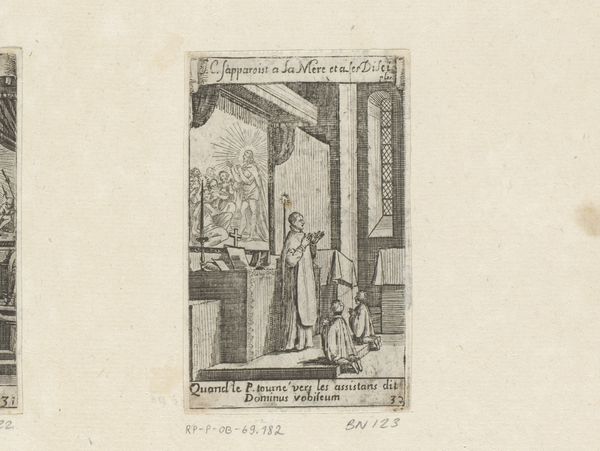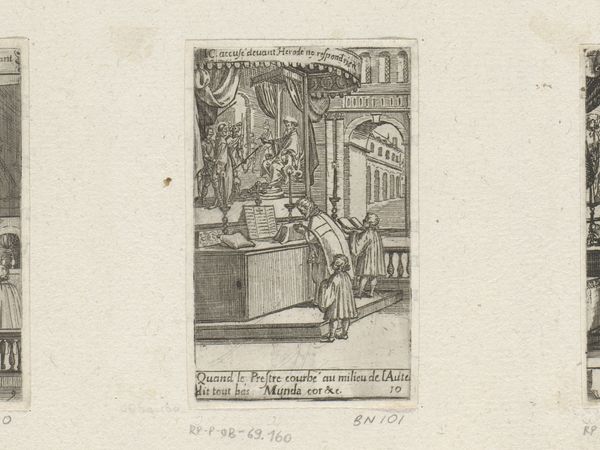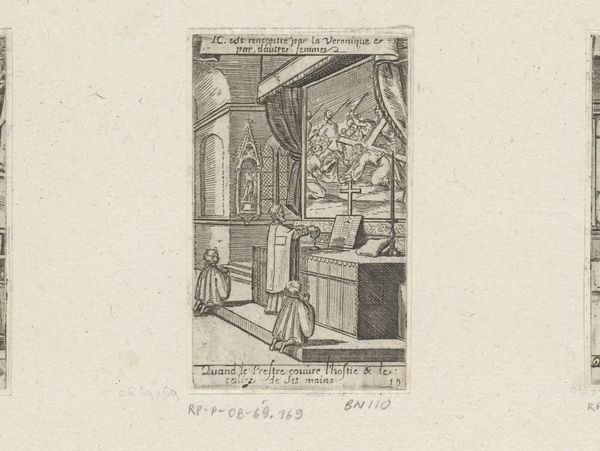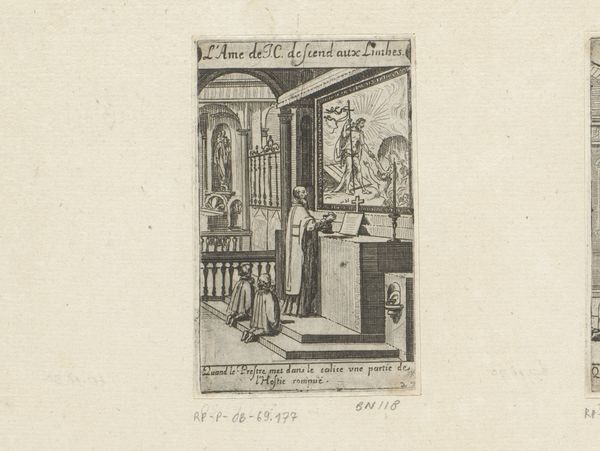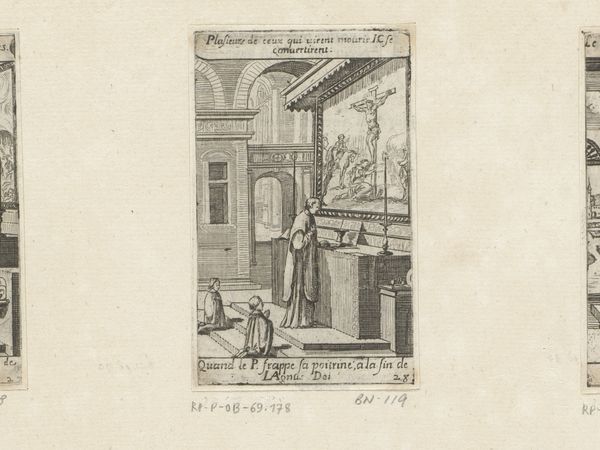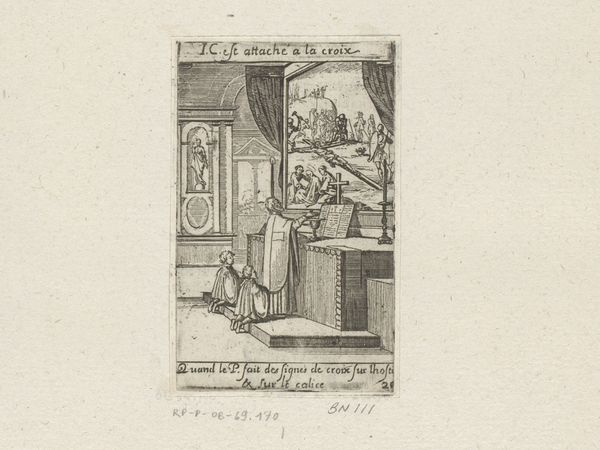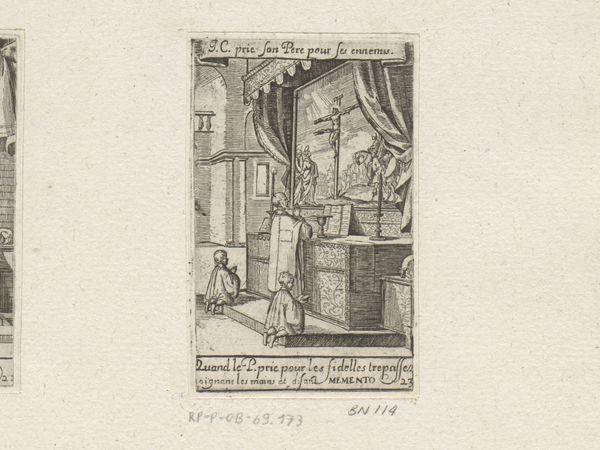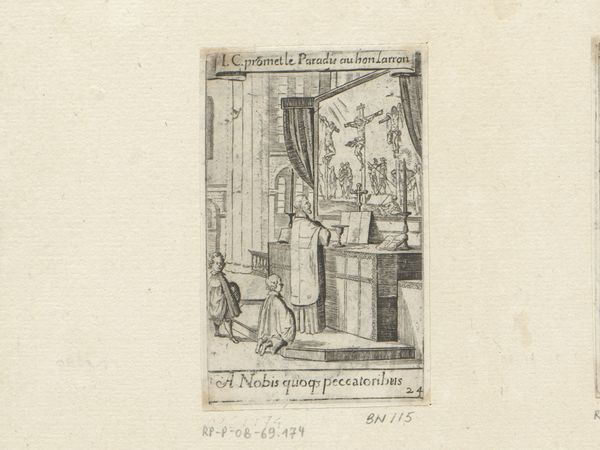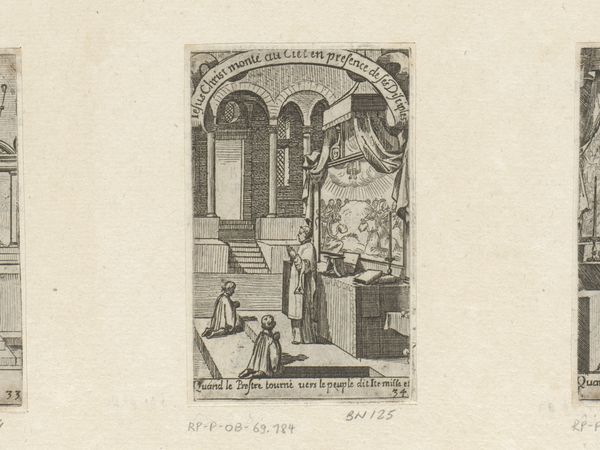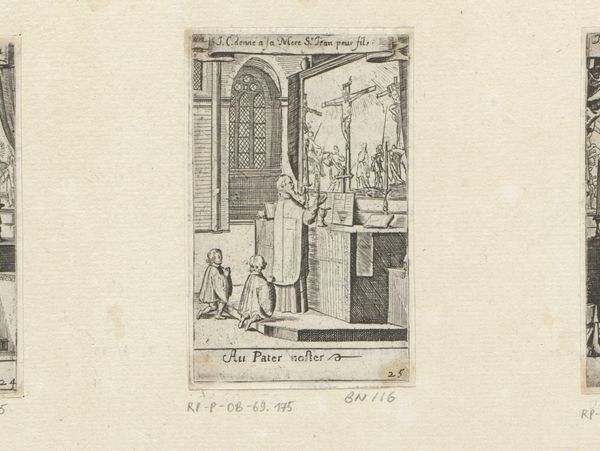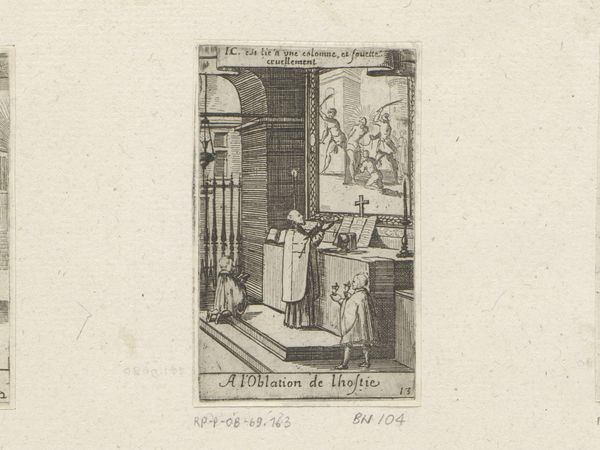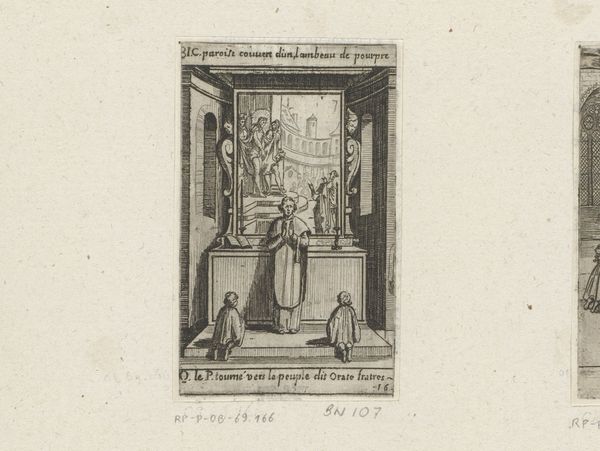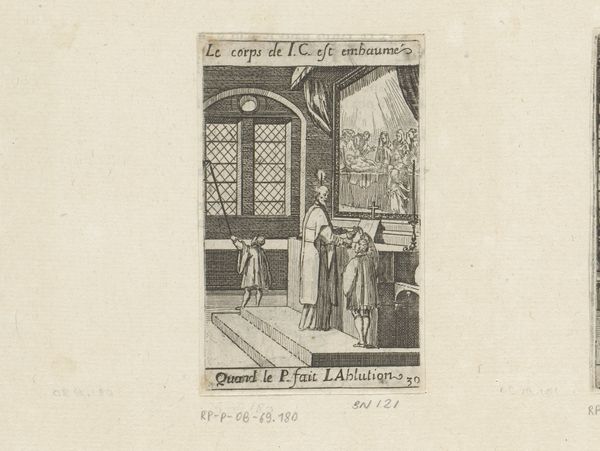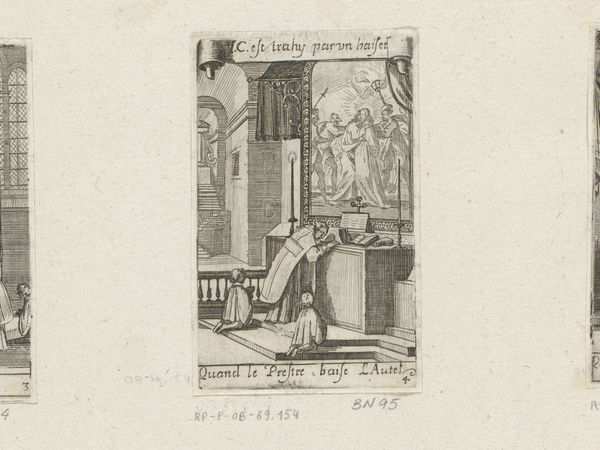
engraving
#
baroque
#
old engraving style
#
line
#
history-painting
#
engraving
Dimensions: height 84 mm, width 52 mm
Copyright: Rijks Museum: Open Domain
Editor: Immediately, I see a somber quality to this piece. It’s monochromatic, small, and intimate; it feels as if we’re witnessing a private moment in a sacred space. Curator: Indeed. What we're observing is Sébastien Leclerc I's "Priester met twee misdienaars voor een altaar," or "Priest with two altar boys before an altar," created around 1661. It's an engraving on paper and a classic example of the Baroque style with precise line work. The setting looks like the interior of a church or chapel. Editor: The use of line is incredibly deliberate, isn't it? Look how it carves out the depth and space, particularly in rendering the window and the robes of the priest. There's an almost geometric precision, even in the drapery. But beyond the formal composition, what were the prevailing material and working conditions during the production of prints such as these? Curator: Excellent question. As an engraving, the work begins with carving lines into a metal plate, likely copper, then applying ink and pressing it onto paper. Printmaking in the 17th century involved skilled labor but allowed for the relatively inexpensive dissemination of images and ideas across Europe. Think of the role it played in shaping religious, political, and scientific thought. Editor: So, a means of mass communication crafted by a trained hand, carrying not just artistic intention but also broader social and political messages? The clothing, too—those priestly robes weren't made from thin air. Somebody wove that fabric, somebody sewed it, each contributing to the symbolism imbued in the character being portrayed. Curator: Precisely. Leclerc uses the formal language of the Baroque—dramatic perspective, a sense of pious gravity—to participate in shaping how viewers engage with faith and authority. The lines guide the eye toward the priest's gestures. Even the way the figures interact with the light emanating from that patterned window is intentional. Editor: Yes, but now I also start to wonder about the social standing and specific experiences of these craftsmen—the engraver, the papermakers, all vital to what this small scene is saying, each bringing their experiences and background to it. Curator: Thinking of this work now, I appreciate the technical mastery involved in such detailed engravings but also your pointing out of the networks of production involved, especially with disseminating prints widely at the time. Editor: I agree, spotting not just how a scene is depicted, but also reflecting upon the hands, and societal networks behind a single artwork grants it greater meaning.
Comments
No comments
Be the first to comment and join the conversation on the ultimate creative platform.
